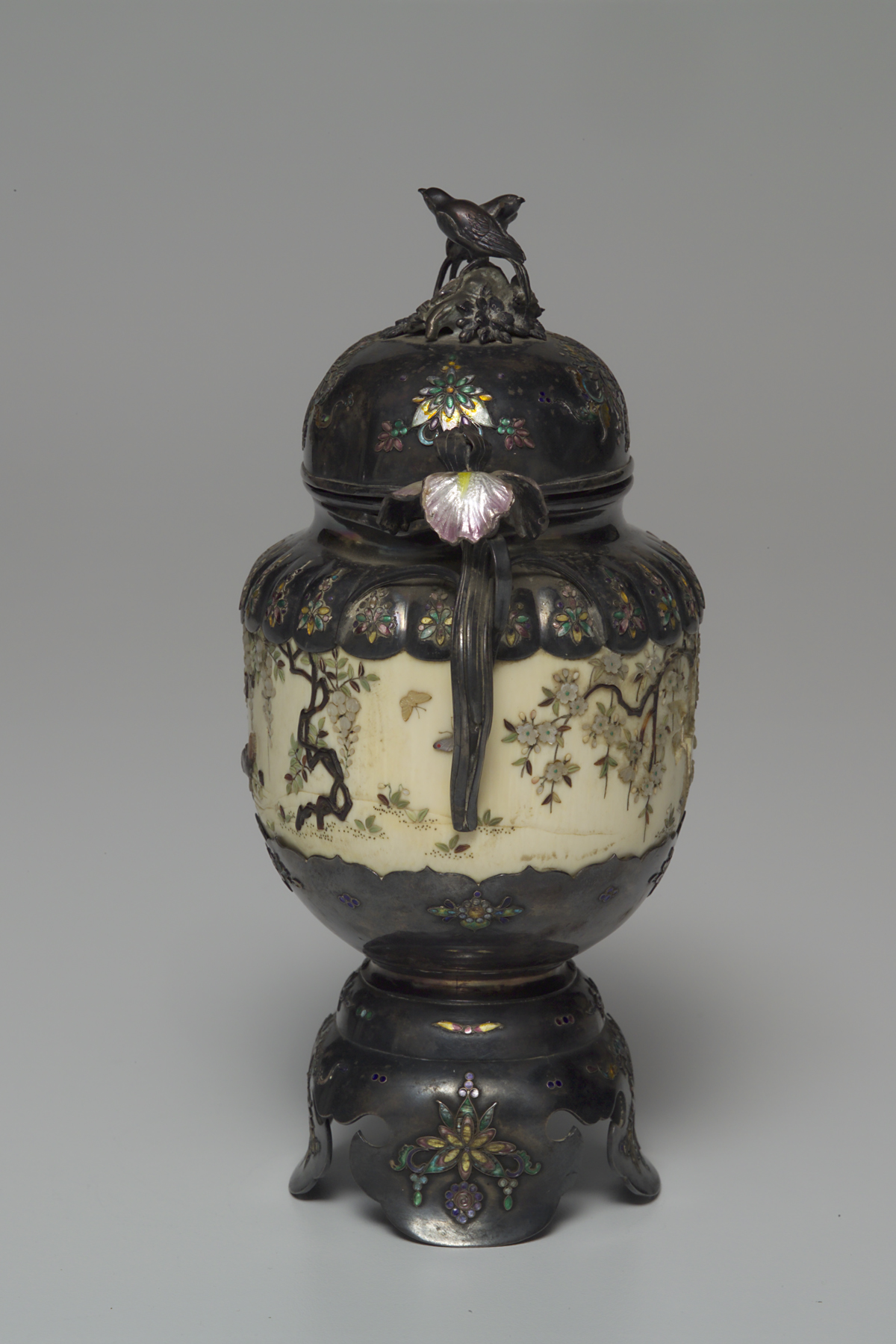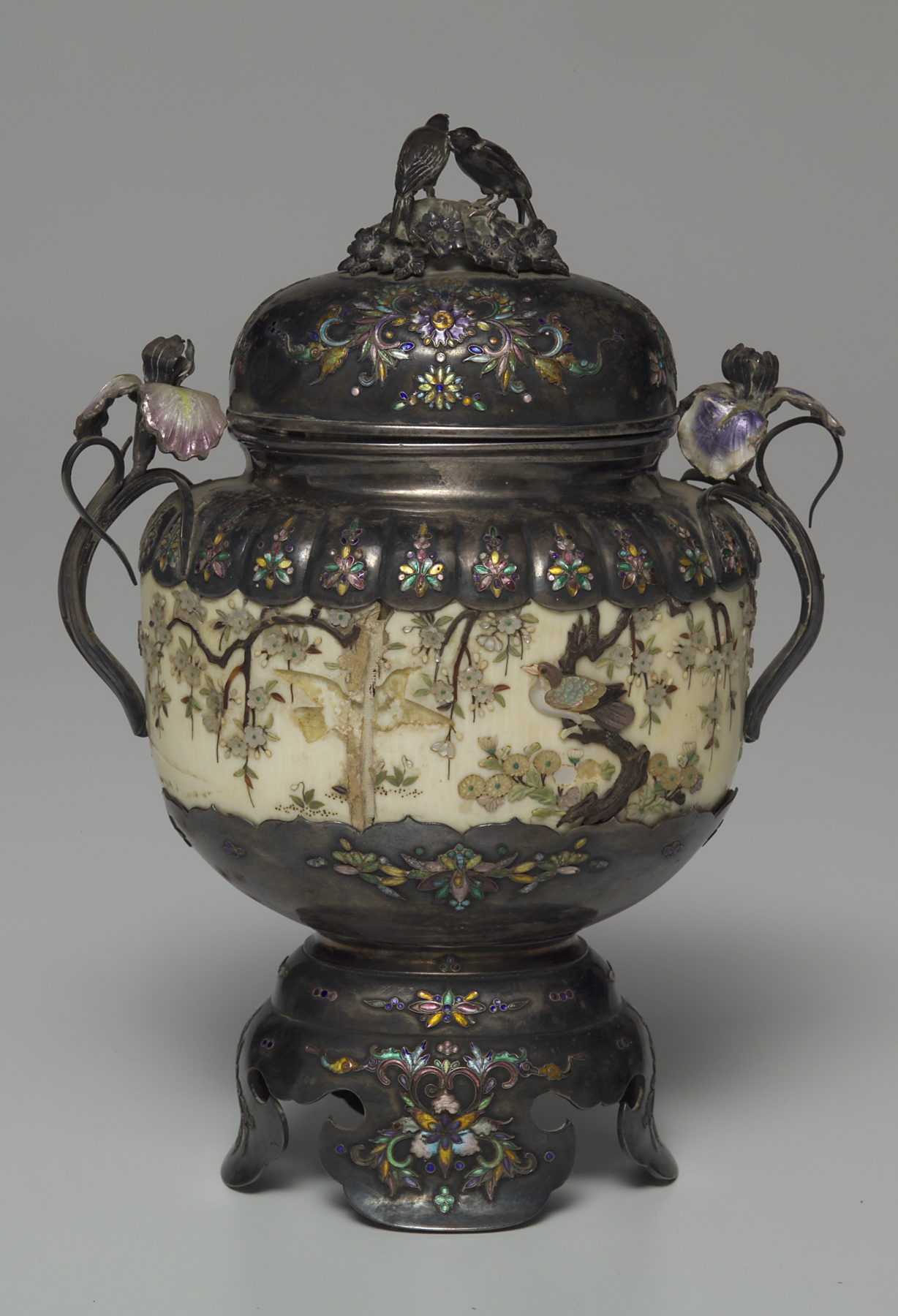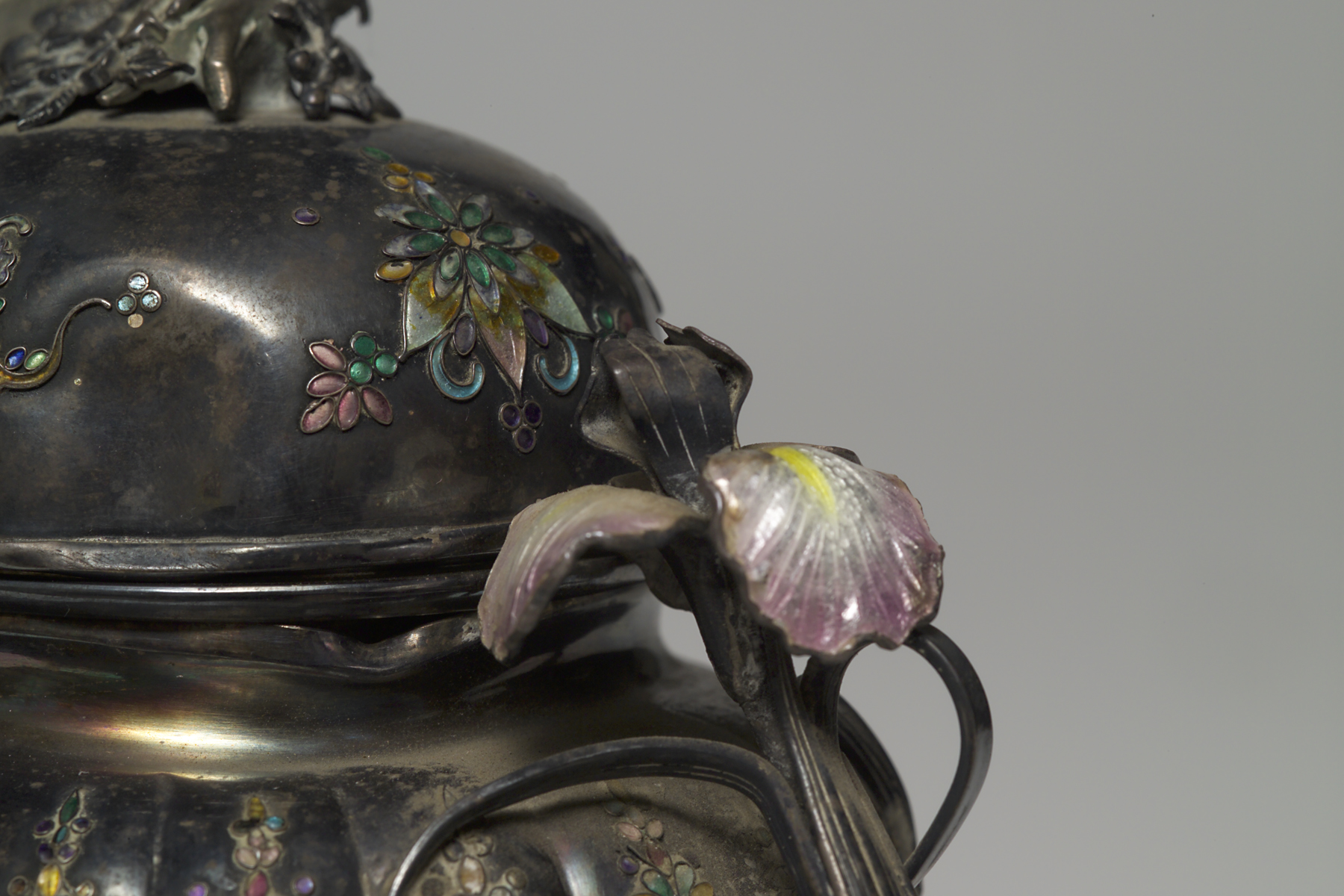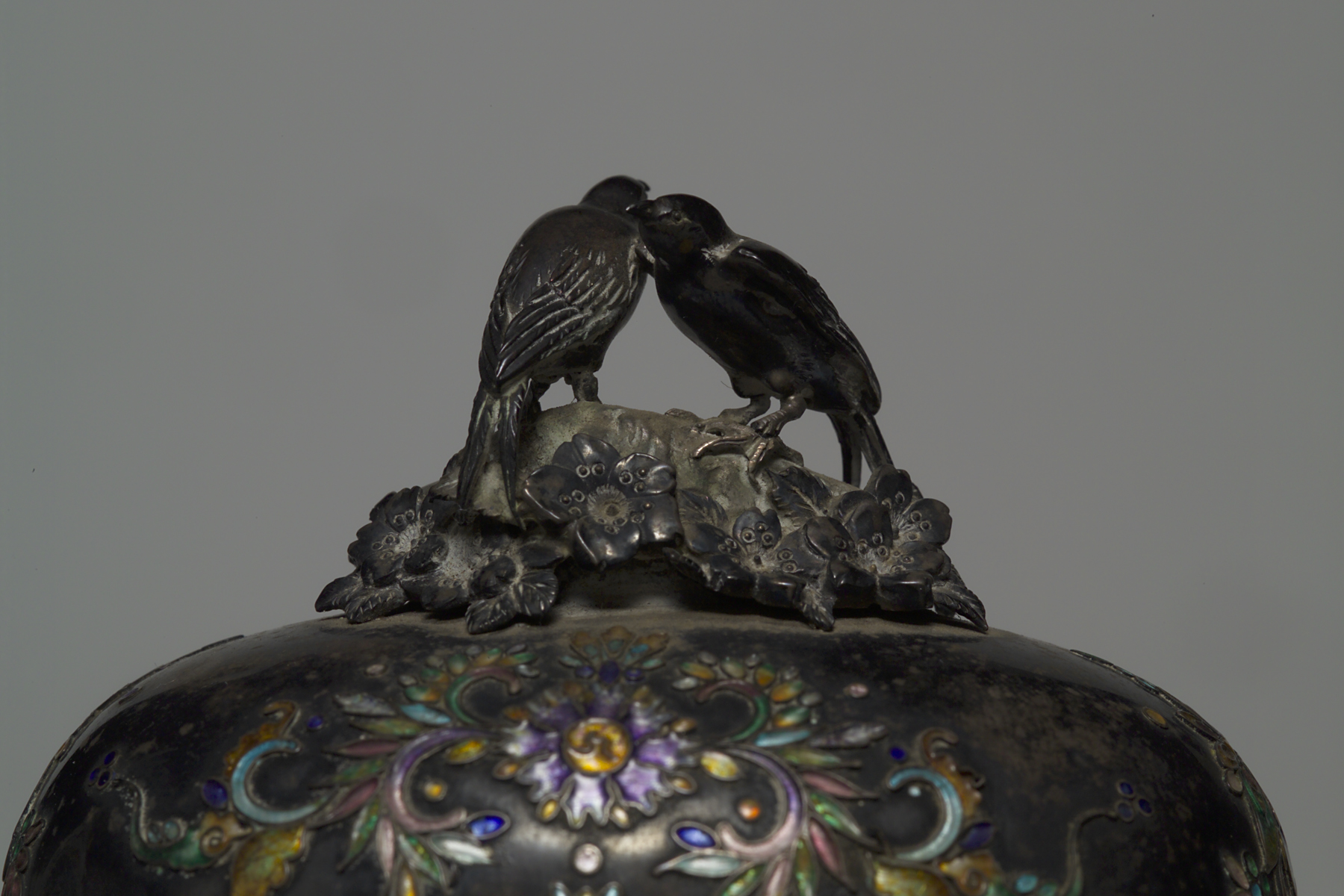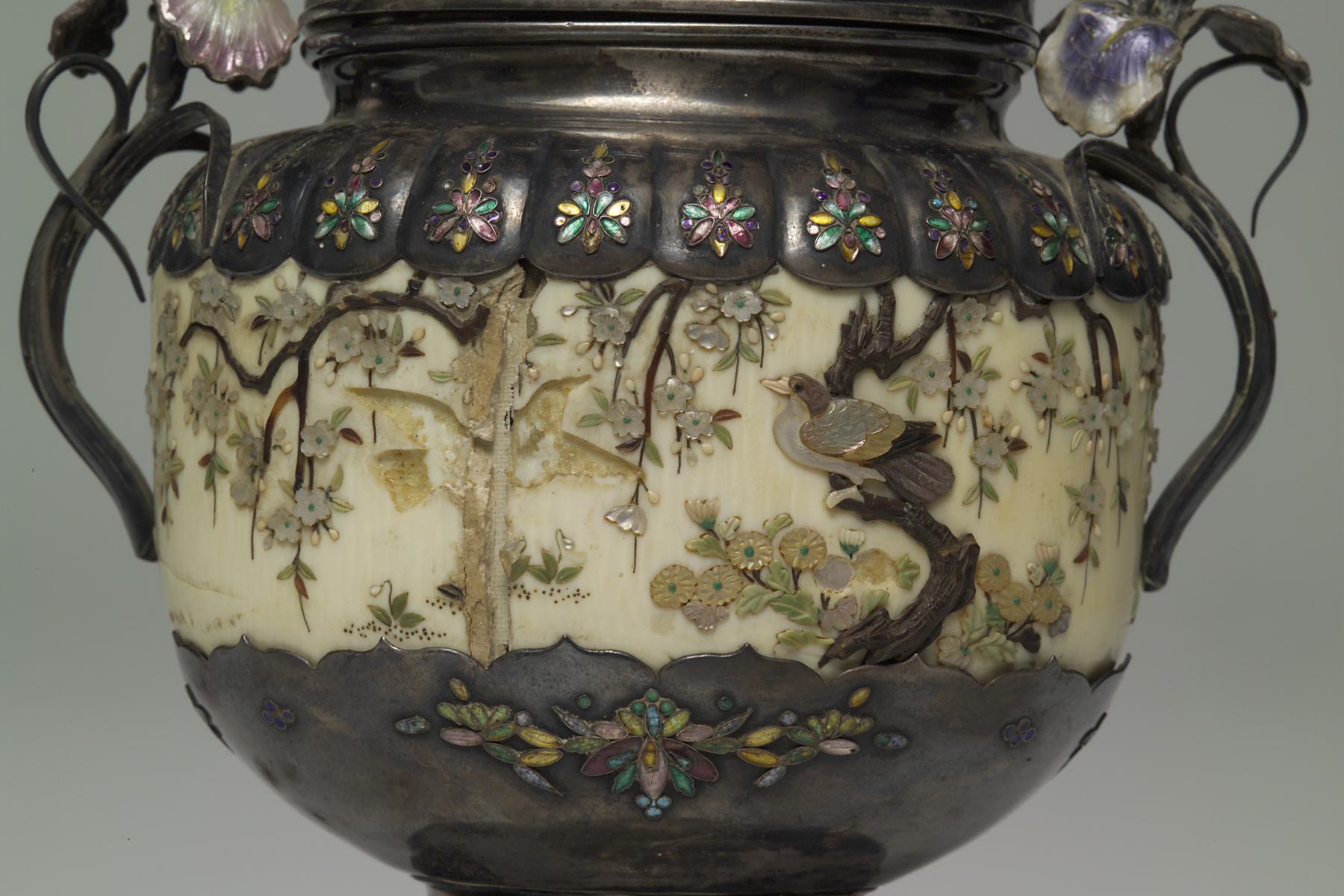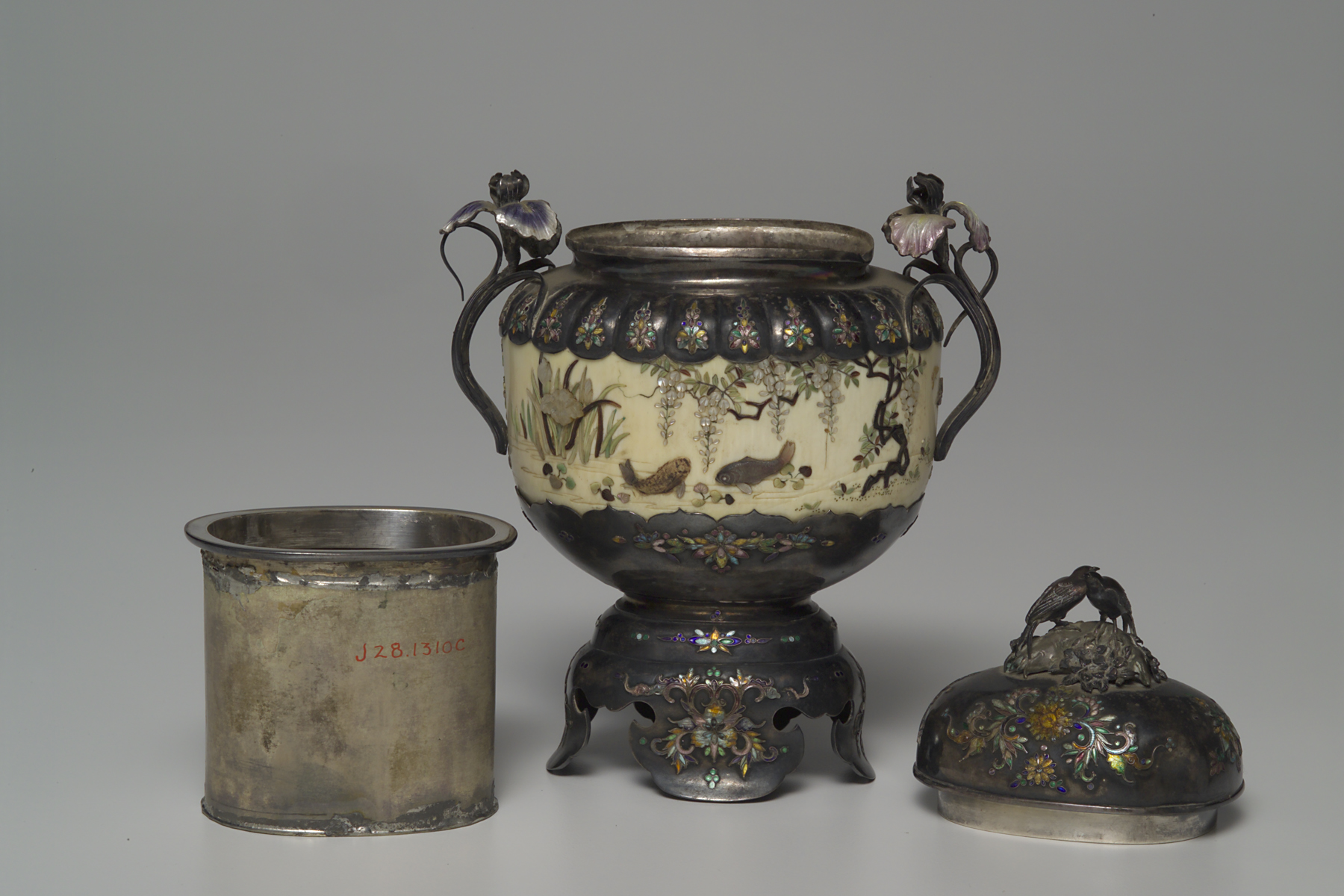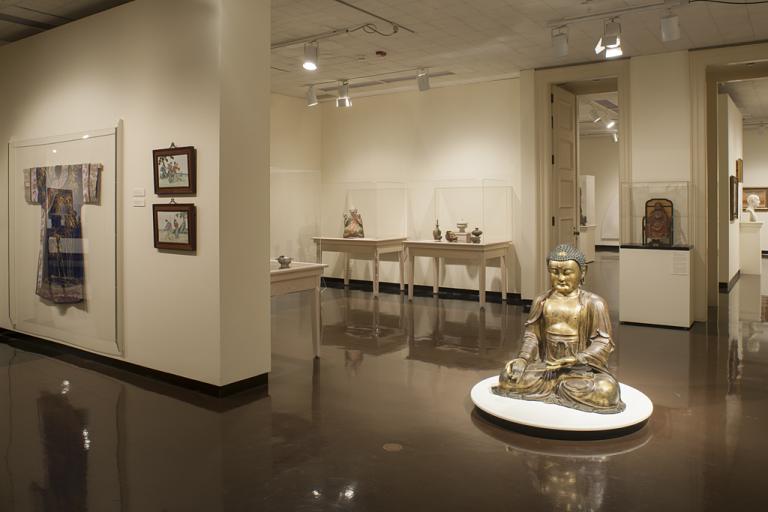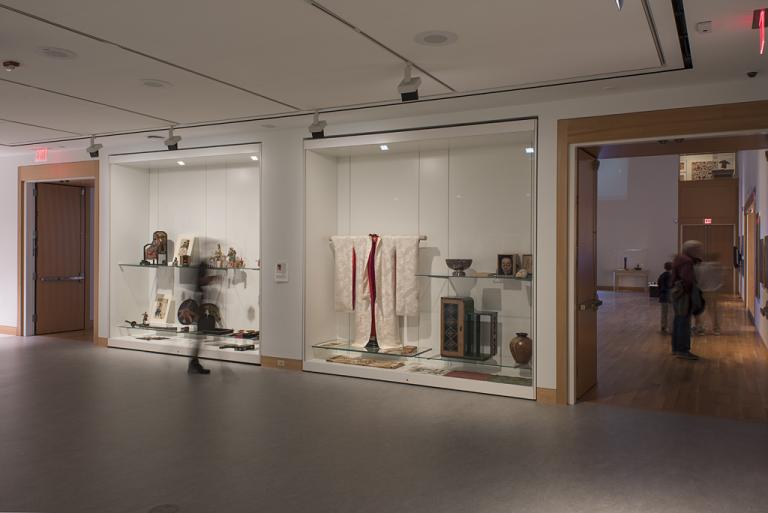香炉 koro (incense burner), Miharu)
Artwork Overview
Miharu, artist
Meiji period (1868–1912)
香炉 koro (incense burner),
circa 1880s, Meiji period (1868–1912)
Where object was made: Japan
Material/technique: mother of pearl; ivory; moonstone; copper; lacquer; silver; enamel; inlay (Shibayama 芝山); soapstone
Credit line: William Bridges Thayer Memorial
Accession number: 1928.1310.a,b,c
Not on display
If you wish to reproduce this image, please submit an image request

